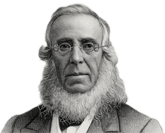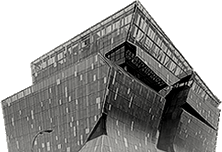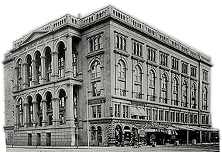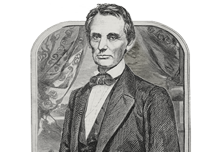Maria Giudice A’85

While an undergraduate at The Cooper Union, Maria Giudice took a class with Peter Bradford who invited the architect and graphic designer Richard Saul Wurman to give a guest lecture. Last year she told an interviewer that during that class “I had a lightning-bolt-to-the-chest moment when he said something to the effect of ‘Stop designing for yourselves. Design is about helping people make sense of the world.’ That statement profoundly impacted me.”
What she heard in class that day has informed her multiple careers as an experience designer, a painter, a publisher, an in-demand speaker, teacher, and coach. Most famously, she sold her user experience business, Hot Studio, to Facebook in 2013. The purchase signaled big tech’s awareness of the huge importance of design in creating effective experiences for users. Hot Studio, which Giudice had founded in 1997 in San Francisco, was known for its expertise in creating well-crafted, user-centric designs and was highly regarded for its expertise in helping companies build products that were not only visually appealing but also functional and easy to use. Hot Studio served hundreds of clients over the years, including small startups, nonprofits, art institutions, and large corporations. It was an ideal acquisition for Facebook since the company aimed to refine its design, improve its products, and improve the experience for users across different devices. At that point, Giudice joined Facebook as the Director of Product Design. Under her leadership, the design team worked on enhancing the Facebook user interface and overall experience, continuing to prioritize a design-driven approach to product development.
Giudice next brought her expertise to the software company Autodesk where she was Vice President of Experience Design. But during a corporate merger, she lost her position, which was an unnerving experience for a woman who had had so much professional success. But in many ways, she says, it was the kind of shift in focus that can lead to great creativity. “Those are moments we have to look for,” she says, because they can be powerful motors for finding the next path. The period led her to examine what she calls the throughlines of her career. What she discovered was that the animating force behind all her work has been the desire to lift people up. It’s back to that moment with Wurman, she says: “We’re in service to others; it’s not a top-down process.“
Giudice’s mother, Carol Frazzetta, was herself a trailblazer and someone who, as a chef and teacher, built a business model based on giving. The founder of the borough’s first and longest running cooking school, Frazzetta was owner and executive chef of the long-time Staten Island institution, Carol’s Café. She encouraged her children to chart their own paths, so when a teacher at New Dorp High School insisted Giudice apply to The Cooper Union, Giudice was ready to take a chance. But nothing, she says, could prepare her for the intensity of the Cooper art experience, the way it challenged students to re-examine a whole host of received ideas and expectations. Yet those challenges could be met thanks to professors who provided an empathetic space for discovery. She points to Professor Day Gleeson’s ability to sense what individual students needed and fashioning an environment to help them thrive. Then there was Don Kunz’s calligraphy class. Three hours of quiet focus writing letter forms was itself a kind of spiritual practice, she recalls. While she entered Cooper believing she would be a painter, it was that calligraphy class that eventually drew her to graphic design, which, with the advent of the internet, grew into user experience design, and the founding of Hot Studio.
Giudice has written four books, including Rise of the DEO (2013) with Christopher Ireland, which grew out of a 2011 TEDx talk. The book explains how companies can thrive by integrating design into their core strategy. Giudice makes the case that leadership in the modern age requires a deep understanding of design principles, arguing that design isn't just about aesthetics but about solving problems and creating meaningful experiences for both customers and employees.
Today, Giudice, who has won numerous awards including the AIGA Design Fellow Award in 2012, remains a legendary figure in the design community, sharing her insights through teaching, myriad speaking engagements, and working directly with organizations to lead transformation through design. She’s restarted Hot Studio, but in this iteration, she coaches business leaders in the ways to apply design thinking to a wide range of challenges to promote innovation and build environments to create meaningful change. To that end, she again teamed with Ireland to write Changemakers: How Leaders Can Design Change in an Insanely Complex World (2023). The book shows how design can help organizations solve complex problems, adapt to digital transformation, and lead through innovation.
And now Giudice, a believer in the power of intuition, finds herself drawn back to painting. Not surprisingly, her work, which can be seen on her Instagram feed @mariagiudice_art, features lettering, some legible, others transforming recognizable letters into enigmatic shapes. It’s artwork that’s open to possibility, and Giudice wouldn’t have it any other way.




